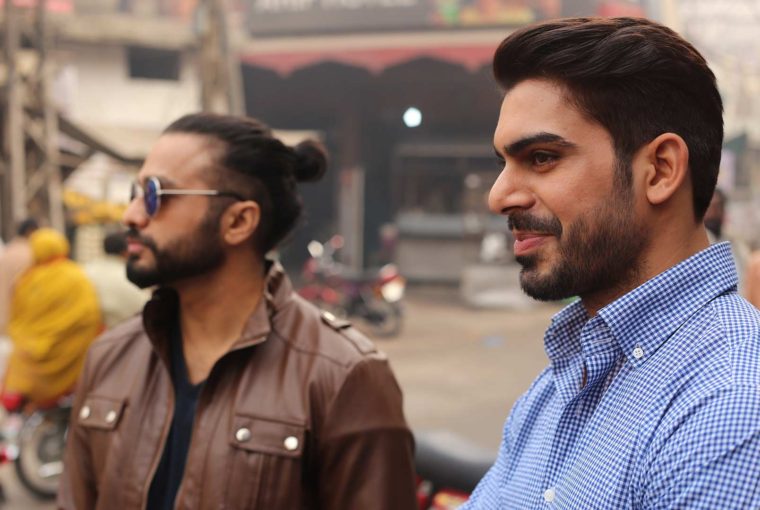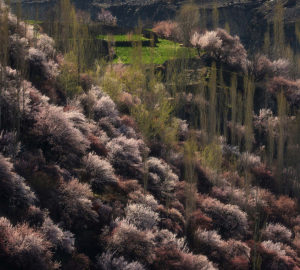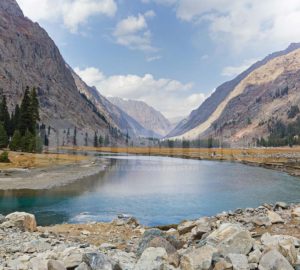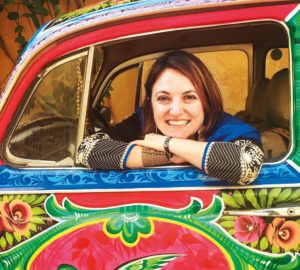It’s that time of the year when the provincial capital of Punjab is shrouded in a mystical mist, the season is festive and the mood jovial. In an attempt to capture the best of the local culinary delights against the historical backdrop of the city in 12 hours, we have Lahore-based Sharjeel and Waleed guiding us through the most traditional quarters of the ancient walled city.
Winner of the Best Male Model 2014 Award by Fashion Pakistan, Waleed Khalid is the face of numerous top fashion campaigns in the country; while Best Male Model nominee at the 14th Lux Style Awards, Sharjeel Baig was recently seen staring at us from Coca Cola billboards nationwide.
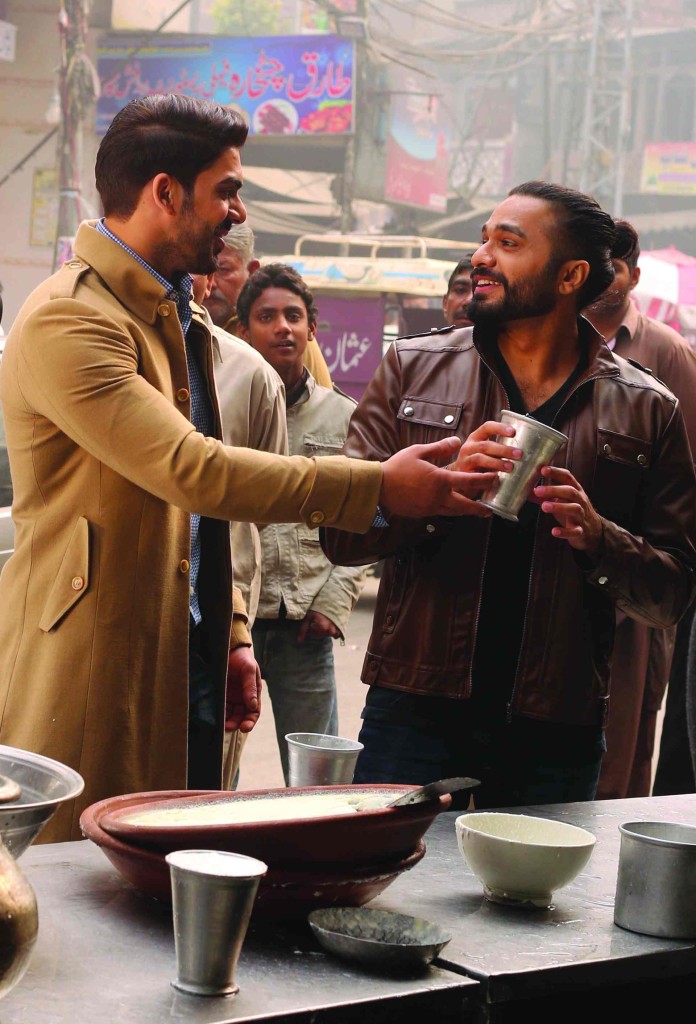
9:00 AM Taxali Gate
Time to get moving! Breakfast is an inherent part of life in Lahore. Like most other locals, Sharjeel and Waleed believe in starting their day with a hearty meal. Located on the west side of the Walled City, in the vicinity of the Taxali Gate, Fazal-e-Haq or Phajja Paye as the joint is colloquially known, is a local food phenomena and their favourite eatery in the area. Famous for the rich entree of mutton trotter curry it serves, the place caters to food connoisseurs almost all day and all night – shutting down only for a short while in the wee hours of the morning.
The history of this quarter is fascinating. It is said that Lahore’s famous sufi poet and saint, Shah Hussain was born here in 1538 AD.
Borrowing its name from the Royal Mint (or ‘Taxal’ in Urdu) of the Mughal era that was once located here, the gate is situated opposite the famous teaching hospital of King Edward Medical College, the Lady Willingdon Hospital. Today, with commercial encroachments and change in land use, both the mint and the physical structure of the gate seem to have vanished.
However, the area continues to serve as a popular food hub offering mouth-watering halwa puri from Taj Mahal and Shahabuddin Halwai; delicious lassi and sardai from Bhola Lassi Wala, the milk shop down the street; chickpeas cooked traditionally in hot spices from Baba Nogaza Pir Chanay Wala; beef shanks from Phakko Bong Wala and authentic tawa (pan-fried) chicken and qeema (minced meat) paratha (fried bread) from food vendors dotting the area.
Eating paye (mutton trotters) to their heart’s content for breakfast leaves little room for lunch. Sharjeel and Waleed head east towards Delhi Gate. The walk is not so short but there is much to see and explore in and around the bustling bazaars of this historical landmark.

12:00 PM Delhi Gate
One of the most famous gates of Lahore, Delhi Darwaza (or gate) as the name suggests opens towards Delhi, once the seat of the Mughal Empire. Built by the third Mughal Emperor, 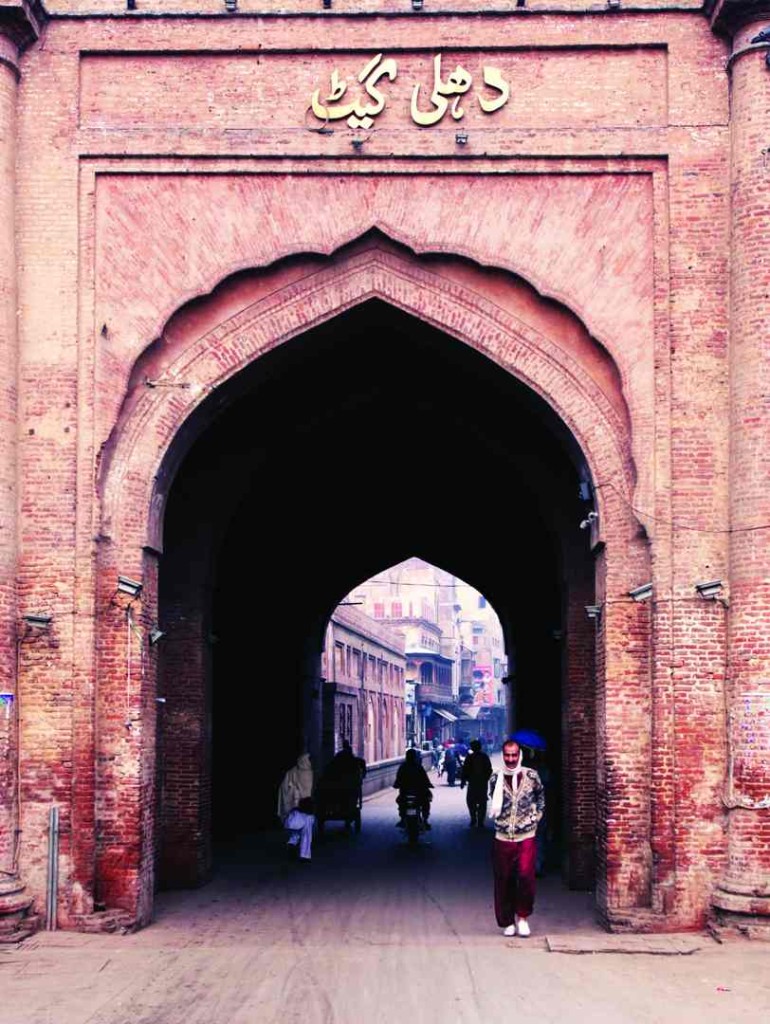 Akbar the Great (r. 1556-1605), the area is steeped in history and culture and pays homage to its grand past through the cultural markers located here. Hence, it is one of the few from amongst the 13 gates of Lahore to have been rehabilitated and restored to its former glory.
Akbar the Great (r. 1556-1605), the area is steeped in history and culture and pays homage to its grand past through the cultural markers located here. Hence, it is one of the few from amongst the 13 gates of Lahore to have been rehabilitated and restored to its former glory.
The 13 Gates of Lahore
Old Lahore was quite a place of wonder. Initially, a walled city enclosed by a 9-meter high brick rampart marked by 13 gates, it was a city that was favoured by many a king and emperor. During the latter half of the 16th century (sometime between 1584 and 1598) then ruler of the Indian Empire, Emperor Akbar the Great constructed these marvellous arched structures of wood and iron to protect the city and its people from foreign invasions.
However, the King could not have foreseen 300 years into the future when, during the 19th century, the British demolished many of these grand structures in an attempt to de-fortify the city. They left only one such passageway standing in its original form, the Roshnai Gate, situated between the Badshahi Mosque and the Lahore Fort.
Although later efforts were made to rebuild and restore these archways, today only six of these ancient structures survive; namely Kashmiri Gate, Sheranwala Gate, Delhi Gate, Lohari Gate, Bhatti Gate and Roshnai Gate. The others are Masti Gate, Yakki Gate, Akbari Gate, Mochi Gate, ShahAlam Gate, Mori Gate and Taxali Gate.
2:30 PM
As one enters the area, the stately Shahi Hammam (royal bathhouse) is situated on the left. Waleed and Sharjeel pause next to its side entrance and order a glass of fresh sugarcane juice. A short walk further down leads one to the resplendent mosque known as Masjid Wazir Khan. With an open courtyard and a central water feature, in the summer, it is a few degrees cooler here than the crowded town outside its doors. With its ornately detailed, hand-painted fresco panels, it is indeed a magnificent Mughal architecture marvel. The boys enter the mosque and find a little oasis of calm.

5:30 PM Sheikhupurian Bazaar and Beyond
As the sun goes down, and the market in the area comes alive, it is time to head back west through Kashmiri Bazaar to Taxali Gate. Cultural enthusiasts, Waleed and Sharjeel share glimpses from their tour as they walk past one of the biggest wholesale shoe markets in Pakistan, Sheikhupurian Bazaar, and witness generational shoe-makers hard at work making the perfect khussas (traditional footwear).
A few steps across the bazaar and the two enter Lahnga Mandi. Sharjeel loves to jam and picks up a guitar at one of the shops to strum a few strings with the local musicians. With around a hundred shops selling and repairing sitar, tabla, dholak, dhol, daf, harmonium, ek tara, toomba, flute, saxophone and guitars, this bazaar is one of the oldest and largest markets in Pakistan for all sorts of traditional and modern musical instruments.
In light of its cultural significance, this area could have been a top tourist district but the presence of Shahi Mohalla (royal quarters) has brought it much notoriety. More commonly known as the Heera Mandi, the eponymous bazaar had initially been set up as a grain market by one Heera Singh – cousin and courtier of Maharaja Ranjit Singh in the early 19th century. It later developed as the Red Light District with the arrival of dancing girls in the locality.
Yet what is lesser known about this area of much historical significance is the fact that it was once the centre of arts and learning. Eminent literary figures such as Ustad Daman, Maulana Altaf Hussain Hali and Allama Iqbal all lived here. Also notable are the impressive palatial mansions like Haveli Dhiyan Singh, Haveli of Khushaal Singh, Haveli Awais Meer and Yousaf Salahuddin’s Haveli amongst others that are part of its heritage and alone worth a visit here.
7:15 PM Fort Road Food Street
The sun has set and bright lights create a magical ambience around the area. As they step out of the music store and turn around the corner, walking past Pir Nogaza Shrine, Waleed and Sharjeel find themselves at the Fort Road Food Street.
Located near Roshnai Gate, the lane runs parallel to one side of the Badshahi Masjid. Established as a food promenade by the provincial government, it is famous for serving authentic desi food in a momentous setting of the historic ensemble – Badshahi Mosque, Hazuri Bagh and Lahore Fort. The experience is almost surreal!

8:30 PM
Strolling down this grand road, they cross by Cooco’s Den, renowned artist Iqbal Hussain’s culinary venture that offers breathtaking views of the mosque courtyard and the Walled City beyond. Set up in his rehabilitated ancestral home, Hussain’s celebrated restaurant made a full feature in TIME magazine.
The boys are overcome with awe and respect by the grandeur of our heritage and culture as they continue to walk in the shadow of the past. Finding a kiosk by the street, they head over and order anda tikki (eggs minced with ground meat patty) with fresh naan (baked bread) for dinner. It is simple and delicious. They finally wrap things up and round off their evening with the delicacy that serves as a symbolic end of a meal, paan. After all it’s been quite a day!

9:00 PM Badshahi Masjid



